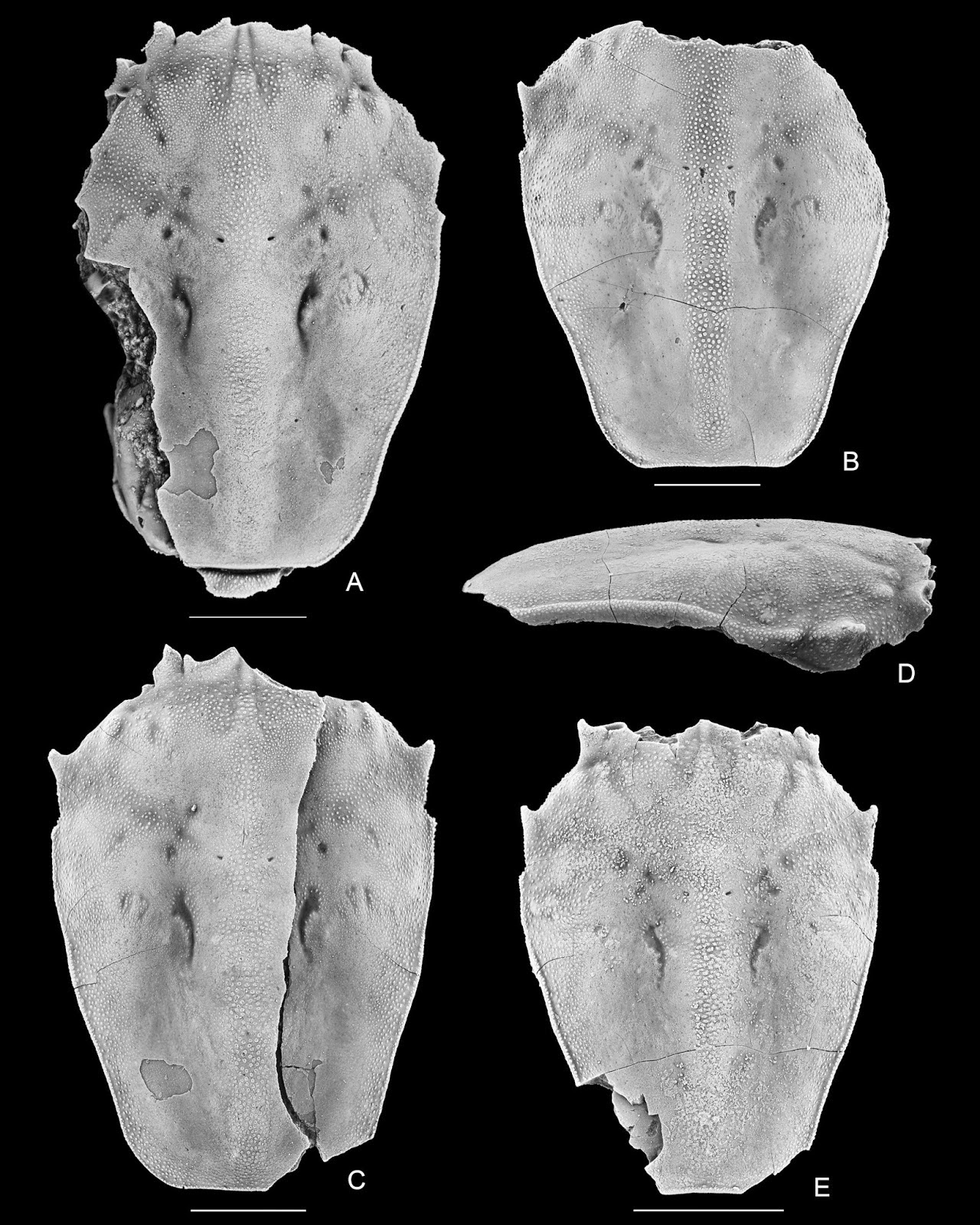Icriocarcinid Crabs are a distinct group of Portunoid Crabs (the group that includes modern Swimming Crabs and Golden Crabs) known from
the Late Cretaceous of North America and Europe. They had strong transverse
ridges on their carapaces and spines on their limbs and mouthparts.
In a paper published in the journal Scripta Geologica in October
2014, Torrey Nyborg of the Department of Earth and Biological Sciences at Loma Linda University, Àlex Ossó of Tarragona in Spain and Francisco Vega of the Institutode Geología at Ciudad Universitaria, describe a new species of Icriocarcinid Crab
from the End Cretaceous Moreno Formation in San Joaquin Valley, California.
The new species is placed in the genus Branchiocarcinus and given the specific name pacificus, in reference to the location where the fossils were
found, on the Pacific Coast of North America; the only previously described species
in the genus, Branchiocarcinu flectus,
is known only from the Atlantic Coast of Mississippi, New Jersey and San Luis
Potosí in Mexico, although specimens assigned to the genus but not to a species
are known from British Columbia on the Pacific Coast.
Branchiocarcinus pacificus is described from three specimens from two different exposures. The
specimens range from 25.7 mm to 30.5 mm in width, and are subtrapezoidal and
twice as wide as long, being at their widest on their front third.
Specimen of Branchiocarcinuspacificus from the upper
Maastrichtian, Tierra Loma Member of the Moreno Formation in Merced County,
California. Nyborg et al. (2014).
See also…
 A new species of Palaeocorystid Crab from the Late Cretaceous of Poitou-Charentes in southwest France. Palaeocorystid Crabs are widespread in sedimentary rocks from the
Middle-to-Late Cretaceous across the world. They are interpreted as having been
specialist back-burrowers, a lifestyle that requires several modifications to
the bodyplan of normally sideways-moving Crabs, particularly narrowing of the
body (which is wider than it is long in most Crabs) and reduction of the...
A new species of Palaeocorystid Crab from the Late Cretaceous of Poitou-Charentes in southwest France. Palaeocorystid Crabs are widespread in sedimentary rocks from the
Middle-to-Late Cretaceous across the world. They are interpreted as having been
specialist back-burrowers, a lifestyle that requires several modifications to
the bodyplan of normally sideways-moving Crabs, particularly narrowing of the
body (which is wider than it is long in most Crabs) and reduction of the...
Frog Crabs, Raninoidia, are well represented in the fossil
record across much of the globe in the Late Cretaceous and Cenozoic, but poorly
recorded from the Early Cretaceous, when the group is thought to have
originated. For a long time the majority of early Frog Crabs known were from
Eurasia, leading to...
 A new species of Pea Crab from St. John’s Island, Singapore. Pea Crabs of the genus Indopinnixa are
found living commensally in the burrows of Sipunculan Worms across South and
Southeast Asia. They are morphologically quite variable, with different species
having different carapace structures and numbers of fused segments, but all are
quite small, which gets the...
A new species of Pea Crab from St. John’s Island, Singapore. Pea Crabs of the genus Indopinnixa are
found living commensally in the burrows of Sipunculan Worms across South and
Southeast Asia. They are morphologically quite variable, with different species
having different carapace structures and numbers of fused segments, but all are
quite small, which gets the...
Follow Sciency Thoughts on Facebook.


